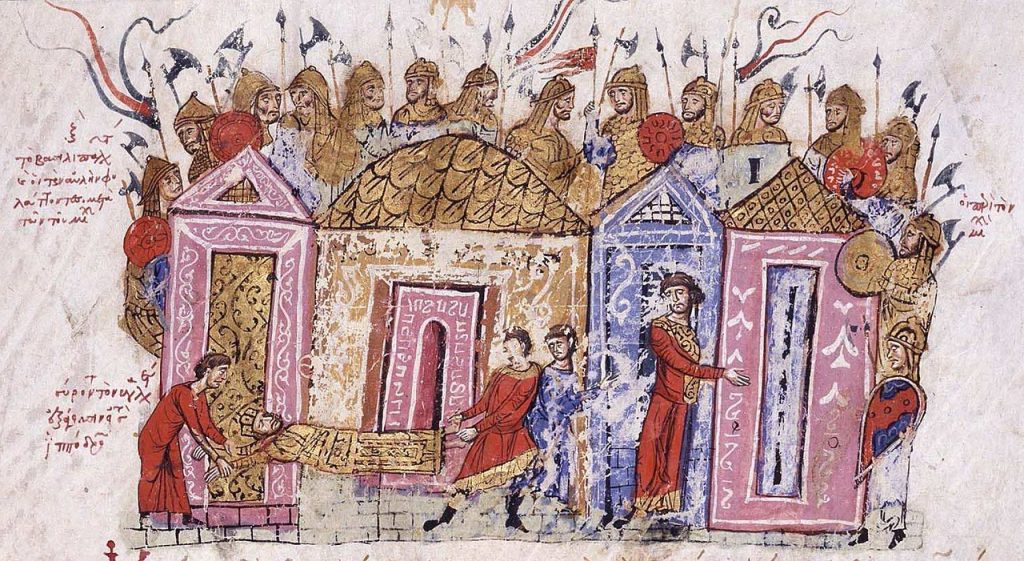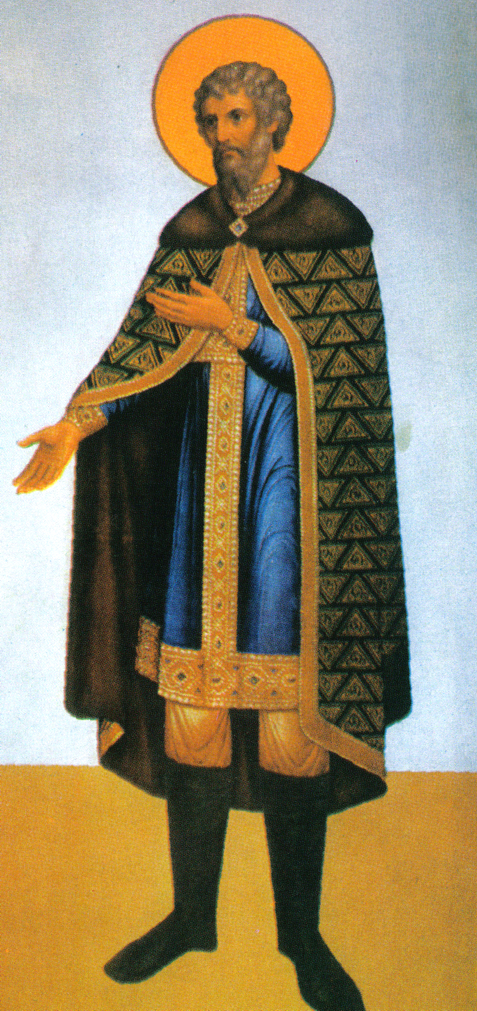
Harald Sigurdsson, also known as Harald of Norway , photo by Colin Smith, CC BY-SA 2.0
Harald Sigurdsson (1015-1066), also known as Harald Hardrada (“hard”) was one of the most fabled kings in Norwegian history. Harald and his half-brother Olaf Haraldsson – who later became Saint Olaf – fought together in 1030 while trying to reclaim the throne from the Danish king Cnut the Great – who made an alliance with the jarls of Lade in the Trondheim region. Olaf died in battle and the brothers’ Upland clans were defeated. As a result, the young Harald was forced into exile in the eastern lands of the Kievan Rus (Garðaríki) – just as Olaf had been exiled before returning to die in battle. Olaf spent two years among the Rus and Swedes, but Harald’s exile proved considerably longer. According to the Heimskringla – a history of the Norwegian kings written in Old Norse by Icelandic historian Snorri Sturluson in the 1230s – “Harald remained several years in Russia, and travelled far and wide in the Eastern land. Then he began his expedition out to Greece, and had a great suite of men with him; and on he went to Constantinople.”[1]
Byzantine Mercenary
Formally constituted under the Roman (Byzantine) Emperor Basil II in 988, for a long time the Varangian Guard existed as a special auxiliary force operating under the emperors.

This force consisted mostly of Vikings, Rus, and later Anglo-Saxons and Normans. When Harald arrived in Miklagarth – the Norse name for Constantinople – he was “but a short time in the army before all the Varings flocked to him, and… It thus came to pass that Harald was made chief of the Varings.”[2] According to the modern historian Krijnie Ciggaar, Harald arrived in Constantinople in 1034 “and served three successive emperors: Michael IV the Paphlagonian (1034-41), Michael V Calaphates (1041-2) and Constantine IX Monomachos (1042-55).”[3] Many of his expeditions were commanded by the Greek general Georges Maniakas, while others were carried out exclusively by Harald and his men. Battles took place in the Holy Land, Bulgaria, Sicily, and Africa:
Harald remained… in Africa, where he gathered great wealth in gold, jewels, and all sorts of precious things; and all the wealth he gathered there which he did not need for his expenses, he sent with trusty men of his own north to Novgorod to King Jarisleif’s [Yaroslav] care and keeping.[4]
Varangians War Against the Pechenegs
Ciggaar notes that in 1036 the Pechenegs – a Turkic tribe from Central Asia located along the north coast of the Black Sea – “raided Byzantine territory as many as three times in succession, on which occasion the local population suffered badly, was tortured and massacred or carried off…” In response, the emperor sent “Russian Varangians together with the newly arrived Norsemen” to wage war.[5] From 1019 to 1054 Yaroslav the Wise, the Grand Prince of Kiev, ruled a Christian domain stretching from Novgorod in the north to the mouth of the Dnieper River on the Black Sea.

When Harald and five hundred of his seasoned soldiers returned to Yaroslav’s kingdom as Varangians, they helped him win his war against the Pechenegs. To celebrate the victory, Yaroslav ordered the construction of the Saint Sophia Cathedral. After Harald had amassed enough wealth, the exiled claimant to the Norwegian throne “longed to return to the North… when he heard that Magnus Olafson, his brother’s son, had become king both of Norway and Denmark, [and] he gave up his command in the Greek service.”[6]
[1] Samuel Laing, The Heimskringla or the Sagas of the Norse Kings From the Icelandic of Snorre Sturlason, Vol. 3(New York: Scribner & Welford, 1889), 349. See: Don Hollway, The Last Viking: The True Story of King Harald Hardrada (Oxford, UK: Osprey Publishing, 2021).
[2] Ibid. 349-350. See: Sverrir Jakobsson, The Varangians: In God’s Holy Fire (Cham, Switzerland: Palgrave Macmillan/Springer Nature Switzerland, 2020), 6-7. “The Roman Empire did not evolve into a Byzantine Empire; it simply continued its existence.”
[3] Krijnie Ciggaar, “Harald Hadrada: His Expedition Against the Pechenegs,” Balkan Studies 21 (1980), 385,
[4] Laing, The Heimskringla or the Sagas of the Norse Kings,Vol. 3, 353-4.
[5] Ciggaar, “Harald Hadrada: His Expedition Against the Pechenegs,” 397-8.
[6] Laing, The Heimskringla or the Sagas of the Norse Kings,Vol. 3, 362.
About the author
Benjamin J. Swenson has been living and working in Korea since 2008. His doctoral dissertation at Pompeu Fabra University (UPF) in Barcelona, Spain, covered Euro-American military and legal history, and the advent of guerrilla warfare and counterinsurgency doctrine in the nineteenth century. He is currently an Assistant Professor in the Department for Human Creativity at Hoseo University in Asan – where he lives with his wife and son. His hobbies include chess, painting, hiking, and bonsai.
4 thoughts on “The Viking King Harald Hardrada: Eastern Exile and Mercenary Life, 1030-1042 (Part I)”